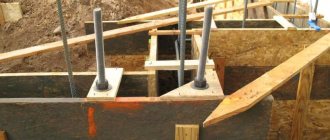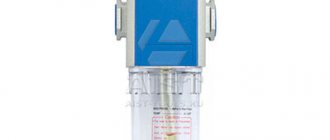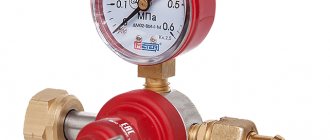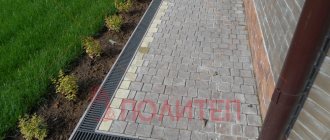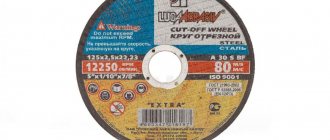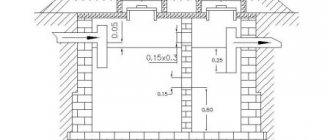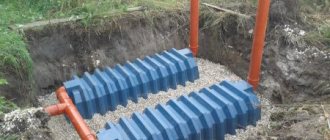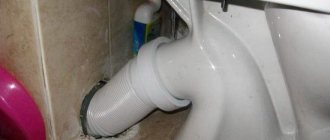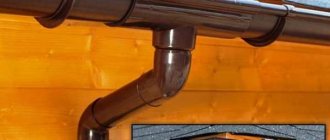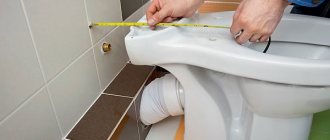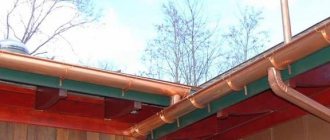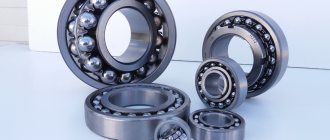Plastic windows have a number of advantages over their wooden counterparts, which is why they have gained wide popularity. An important aspect of proper window installation is the choice of technology and fastening system. Fasteners for plastic windows are responsible for sound insulation properties and service life.
What it is
Special fasteners for installing glass blocks are produced in the form of a metal strip. The part is created using cold stamping technology from a sheet of galvanized steel. The thickness of the anchor plates varies between 1-2.5 mm. Notches and round holes were placed on the wide side of the mounting elements.
When installing, glass blocks must be secured as securely and stably as possible. For plastic windows, 2 methods are used:
- On the screws (unpacking). Directly screwing the frame to the opening with anchor bolts is very difficult and requires professional skills from installers. The structure is completely disassembled and the sashes are removed. During installation, windows often become depressurized or glass breaks.
- On anchor plates. Galvanized fasteners easily provide stability to the structure. The mounting parts support the weight of the frame and allow for leveling.
Installation on anchor plates is faster and simpler than screw technology, so this method is often used by novice installers. Universal steel parts are suitable for openings made of concrete, wood or brick. When choosing elements, take into account the weight of the structure and the characteristics of the material in which they will be installed.
Fasteners for plastic windows Source okno.kh.ua
Anchor plates for PVC windows are attached to the surface of the frame and wall with screws. Due to technical features, the elements are suitable for glass blocks of standard sizes (up to 4 squares). Heavier or more complex structures are mounted with screws for reliability or a combined technology is used.
Characteristics of parts Source okna-dveri.com.ua
Where is it used?
Anchor bolts today are one of the most popular types of fasteners, which is due to their unique technical characteristics and wide versatility, which allows the use of such elements for fastening a wide variety of structures and objects of different sizes and weights.
The metal frame anchor got its name because it was originally used for high-quality and reliable installation of window frames and door frames. Today, a metal frame dowel (another name for a frame anchor) is still used in the installation of window and door structures, but its scope has expanded significantly.
Securing a door or window frame - typical uses of frame anchors
Specialists working in the field of construction and repair drew attention to the versatility of the design of such an expansion-type anchor bolt, as well as the high reliability of fixation that it provides, and began to actively use it for the installation of finishing materials, elements of building structures, as well as items for various purposes. . In particular, this anchor has gained particular popularity when installing wooden beams on various types of surfaces.
Types of plates
There are two types of anchor fasteners. Rotating models are used when installing complex PVC windows or openings of non-standard shape (arches, trapezoids). The mechanism ensures maximum adherence of the plate to the wall and frame. The turn signal consists of a steel strip and bent teeth. When installed, the element protects the glass block from deformation.
Type of anchor plates Source pmfz.ru
Fixed models are used for standard installation. The parts are fixed inside the opening, selecting the desired angle for fixing the PVC window. For better adhesion, there are special rings (“claw hooks”) on the surface of the metal fasteners. The strips are 15 cm long and 2.5 cm wide.
Manufacturers of plastic profiles often produce anchor plates for their products. Fasteners are universal and replaceable. If a part cracks during installation, it can be easily replaced with a model with similar characteristics from a hardware store.
Mounting plate Source novosibirsk.kassot.com
Anchor plates are made of strong galvanized steel. To prevent installation parts from rusting or collapsing, the surface is coated with anti-corrosion varnish. Each manufacturer has its own requirements for metal thickness, so the parameters range from 1 to 2.5 mm. For plastic windows of standard sizes, 1.5 mm models are sufficient, for heavy three-leaf or multi-chamber windows in high-rise buildings - from 2 mm. Those that are too thick (more than 2.5 mm) will have to be formed on a template, which can lead to destruction of the protection.
Types of fasteners for installing plastic windows
There are several types of fasteners for plastic windows. Each of them has a number of advantages and disadvantages, which determine the appropriateness of use in each specific case. They are divided into the following types:
- Anchor dowel. It is most rational to use fasteners with a diameter of 10 mm. The hardware ensures reliable fixation of the frame. The length of the dowels depends on the installation location and the characteristics of the walls.
- Nog. It has become widespread in Europe; it is difficult to find high-quality fasteners in domestic stores.
- Anchor plates. Each type of window is equipped with a specific type of mounting plate, but there are universal models. Sometimes the plates are not screwed into the frame, but snapped into place.
Previously, wood screws were used to install windows, but such a system has a low reliability indicator. Their only advantage is their low cost, but you should not skimp on window installation. The choice of window fasteners should be based on the features of the system and the skill level of the technician.
Anchor or anchor dowel
Fastening windows with anchors for installing PVC windows is carried out by professionals. Structurally, the device consists of three parts: an internal sleeve, a threaded screw and a sleeve. The movement of the screw along the thread leads to expansion of the sleeve by the sleeve, due to which the fastening provides a high degree of reliability. In some cases, a significant fixation force is a disadvantage, since it is very difficult to dismantle such a system: reinstalling windows or replacing them will require serious physical and time costs. In addition, installation should be carried out by an experienced specialist.
The anchor dowel is not suitable for use in apartments with multi-layer walls. The spacer will not be able to secure itself and the fixture will fail. The walls of panel houses of the P-44 series have an air gap with thick insulation; it is impossible to fasten the frame with an anchor in such a wall.
The dimensions of the dowel differ, but experts prefer devices with a length of 10-20 cm and a thickness of 0.8-1 cm. The choice of size is based on the distance from the frame to the slope. The anchor is mounted in the internal cavity of the system directly under the glass. As a rule, the frame has a thickness of 40 mm, the minimum length of penetration into the wall should also be at least 40 mm; these calculations must be taken into account when purchasing hardware. The optimal option is 110-160 mm.
Dowel or screw for concrete
It is a standard screw, which provides less reliable fastening than in the previous case, but it is easy to dismantle if necessary. The disadvantage of the product is the difficulty of installation in insulated walls. Fastening a plastic window with a dowel is used if the window opening is made of concrete or brick.
The size is selected according to the same principle as the size of the anchor dowel. The most rational solution would be to purchase a screw with a thickness of 8 mm and a length of at least 100 mm.
Anchor plates
Disputes over this type of fastener have not subsided for many years, but leading window manufacturers have abandoned screws and dowels in favor of plates. The product comes in two types: non-rotating and rotating (the long section changes the angle of inclination). The installation technology is distinguished by its simplicity and speed of implementation: the plate is attached to the end side of the window, and the second edge is fixed to the wall with a simple plastic dowel. The advantages of the method include the following:
- no need for through drilling of the frame;
- if there is reinforcement or other obstacle in the wall, then the product can be easily rotated at the desired angle; there is no need to drill a second hole;
- This is one of the few mounting options that are suitable for fixing in the walls of P-44 series houses.
Many home craftsmen claim that such a system is unreliable because it is not able to withstand severe wind loads, but this assumption is wrong. About 90% of the total load comes from polyurethane foam. When using another type of insulation (mineral wool or polystyrene foam), preference should be given to screws and dowels.
Advantages and disadvantages
Anchor plates for installing plastic windows are inexpensive and practical fasteners that will save effort and money during installation. If the technology is followed, glass blocks perfectly resist temperature fluctuations, protecting the package from deformation. Reliable parts can withstand operating loads (wind, rain) well and will not become loose from the recoil of opening the doors.
Elements made of galvanized steel Source barnaul.veka.ru
How to install
To carry out installation work, you must have the following tools:
To install a window frame, you need to perform several technological steps. Moreover, they all must take place in a certain sequence:
If the installation of the frame anchor is carried out in compliance with all technological requirements, we can talk about creating a reliable fastening of the window frame. Such a part can withstand enormous loads. It will create a strong connection between parts made of different materials.
Source
Window installation technology
Installing glass blocks onto anchor parts is much easier than unpacking. When installing it yourself, it is easier for a craftsman to simply insert the structure into the opening than to disassemble the window and screw screws through the frame. To avoid mistakes, we recommend studying the procedure algorithm.
Installation rules
Anchor fasteners provide the glass block with less installation rigidity than when unpacking. On “deaf” models the feature does not appear noticeably. When working with heavy multi-leaf structures, rules will help protect windows from deformation.
Steel fasteners are installed in the wall of the opening, not the slope. The plates are attached not only to the frame, but also to the profile. In order for the screws to fit in, during installation the screws are screwed into the reinforcing structure. For reliability, professionals advise securing each anchor element with two fasteners.
Rules for installing plates Source vsecuplu.ru
Steel parts must be positioned correctly. The plate is placed strictly in the center on top; two plates are needed on the sides, installed below and above. The optimal distance from the corners is 20 cm, the pitch between fasteners is 50-70 cm.
To ensure that the frame is in maximum contact with the opening, the anchor parts are bent at an acute angle. The method allows you to neutralize profile displacement and increase the rigidity of the installation. The plates are fixed using self-tapping screws, which are inserted into dowels. The plastic neck of the fastener will press the steel strip to the window.
Mounting on flexible parts provides reliable load resistance. The bending angle often depends on the size of the installation gap. Fasteners are fixed on the surface of the glass block before installing the structure in the opening. For fastening, use small construction screws with a diameter of 5 mm, no longer than 4 cm. Polyurethane foam and adhesives are not used.
Features of working with plates Source kamburg.ru
Plastic colored windows are mounted on anchor plates, otherwise temperature changes in the structure are possible. Complex or heavy models made of white PVC are often installed using a combined method. The bottom of the glass block is bolted, the top is placed on steel fasteners.
Fastening the plates
The anchor parts are installed first. For a standard size window, 5 metal elements are sufficient; for tall structures, 1 additional element is used. On the frame, an interval of 0.5-1 m is left between the fasteners. To prevent the structure from losing stability, a distance of 250 mm is maintained between the plates and the corner.
After marking, remove the film from the block. To drill holes, use a hammer drill or impact drill. The procedure is carried out very slowly, trying to avoid contact of the metal cartridge with the plastic. In order not to damage the PVC, take a very long “sting”. The frame is protected with a piece of polyvinyl chloride, which is placed near the hole.
Drilling holes with a hammer drill Source vsecuplu.ru
The first to make a gap in the opening is for the anchor dowel. In order for the wide part to press against the steel part, the fastener must be deployed. To fix one element, use 2 self-tapping screws with a diameter of 6 to 8 mm. For convenience, the screws can be installed with a screwdriver.
A clumsy conical component will help strengthen the fastening. Using this principle, anchor parts are installed along the entire plastic profile, maintaining the required interval. The first bend should be adjacent to the frame, the second should be located above the slope section.
Plug for frame dowel in Minsk and Brest: buy wholesale, find out prices
At VISMA-Stroy you can buy caps for frame dowels in bulk at a competitive price. What are the plugs for? Their main purpose is to protect the dowel body from external influences, mainly condensation on the windows, which oxidizes the material. Thus, it helps protect the fastener from rust.
The plug can be easily attached to the dowel. In addition, they are available in various colors.
You can find out the prices for frame dowel plugs in our price list. Orders for the supply of frame dowels complete with plugs are being accepted now. We are ready to complete any quantity to order
Mounting features
When installing, be sure to pay attention to the raw materials from which the partitions are made. Walls are often concrete, wood or brick. Each material has its own characteristics, so the installation technology adapts to the characteristics of the opening.
Tree
It is prohibited to install window units in partitions made of wood. Under the influence of weather conditions (temperature, humidity), log houses or frame structures are deformed, which will cause damage to the profile. If you fix the frame by unpacking, then changing the structure of the building will push out the fasteners. The loose screws will gradually come out of the wood and remain inside the glass unit.
Installation of anchor parts on wood Source okon-sp.ru
Installing windows on plates is the only correct solution, even for heavy and multi-tiered blocks. The profile will be protected from deformation by an additional frame made of wood, which is placed in the opening. When installing on anchor parts, leave 3 cm of free space between the box and the partition. The gap is then insulated with jute and hidden under the platband.
Plastic window sills are installed using traditional technology. If a wooden model is needed, then first install a natural horizontal structure, then proceed to fixing the additional frame. The bottom profile rests its entire surface on the wood part. Empty spaces are foamed with a polymer mass, which, after crystallization, strengthens the fastening. After drying, the remains are cut off and the joints are puttied.
Peculiarities
The main difference between a frame anchor and any other anchor-type fastener is an elongated pin with a countersunk conical head. All this is necessary so that the three-dimensional structure of a window frame or door frame can be secured to a usually solid wall material. The fasteners are excellent for installing hollow structures, such as modern metal-plastic window frames or metal door jambs.
The purpose of fastening is to securely fix the frame in the opening. Since such structures, in addition to constant load, constantly experience variable dynamic influences (arising from their functionality), special requirements are imposed on the fasteners intended for their installation. It must be resistant to tearing and bending, while being tolerant of vibrations.
A metal anchor bolt and a spacer sleeve make it possible to combine all the requirements for such fasteners, which has significantly expanded the scope of application of frame anchors. Currently, they are purchased not only for installing a window or door, but also for installing various types of structures, decor, or hanging not very heavy equipment.
The appearance of frame anchors has caused the need for their standardization; as a rule, they comply with specifications, since during the development of GOSTs such fasteners did not exist at all. But the alloy (steel, stainless steel, brass, aluminum) used for their manufacture must strictly comply with GOST, which standardizes the products of metallurgical enterprises.
Possible difficulties
The durability of glass block and indoor comfort depend on compliance with installation rules. Installation of PVC windows on anchor plates must be carried out under the supervision of a professional. If the technology is violated, negative situations arise that a novice installer will not notice.
If the profile is not set at the correct level, the doors will open on their own. The problem can be partially eliminated by adjusting the fittings, but the design will still continue to function with errors. It is better to spend 10-15 minutes making adjustments before installation than to correct defects.
Using fasteners for an extension Source techno-comf.ru
The construction foam on the street side must be covered. Over the course of a year, changes in temperature, humidity and sunlight destroy the structure of the polymer mass. If in the first weeks the substance does not allow drafts, dust and cold into the room, then after 10 months the tightness of the opening will be broken.
When installing anchor plates on the frame, you must carefully screw the fasteners. If you accidentally damage the profile, the integrity of the structure will be destroyed. Plastic windows:
- will begin to sweat;
- freeze in the cold;
- Mold will appear on the slopes.
To prevent the block from depressurizing, it is better for novice installers to use small wood screws. Compact fasteners with dowels hold well not only in wood, but also in bricks and concrete. An accidentally bent part can be easily removed from the wall or profile.
When working with dense partitions, the plates can be attached to the structure with an anchor. The classic element consists of a steel sleeve, a fitting and a marking for a screwdriver. As the part rotates, the screw expands, securing the fastener in the wall and in the plastic. The disadvantage of the model is its high cost.
Professionals fasten the plates with dowels instead of anchors. Self-tapping screws for concrete are larger in size than models for wood. Fasteners inserted into the dowels will securely fix the structure in the opening. To ensure that the part fits perfectly into a dense base, holes are pre-drilled. Under heavy loads, fasteners often break.
Operating principle and design features
The technical capabilities of a frame anchor are determined by the features of its design. When choosing a frame metal anchor for installation work, you should take into account the fact that it is not designed for significant loads and the large weight of objects secured with it. The weight of an object fixed on a vertical surface using one anchor of this type cannot exceed 30 kg.
Frame anchor device
The main structural element of a frame anchor bolt is a metal sleeve with longitudinal slots that form peculiar petals that open during installation of the fastener. A cone nut is responsible for opening the petals on the side of the bushing. It, screwed onto the main rotor, acts on the inner surface of the sleeve with slots, thereby unclenching it. The bushing, having increased in diameter, engages tightly with the inner walls of the mounting hole, securely locking into it.
To make it more convenient to manipulate the screw screwed into the spacer sleeve, there is a head with slots for a shaped screwdriver on its upper part. A special feature of the frame anchor is that its head is completely recessed into the mounting hole, so the side surface of its head has a conical shape. When using such fasteners, you should not only drill holes for their placement, but also provide a special “sunk hole” into which the bolt head will fit.
The frame anchor for hollow structures has an enlarged spacer zone (butterfly) and a flat-shaped nut that works to tighten
Frame anchor (dowel): main parameters and installation features
A product such as a frame anchor is one of the types of fastening elements presented on the modern domestic market in a huge variety. However, this particular anchor, as many experts admit, is the most universal fastener, which explains its high popularity.
Frame anchor - simple and at the same time universal fastener
